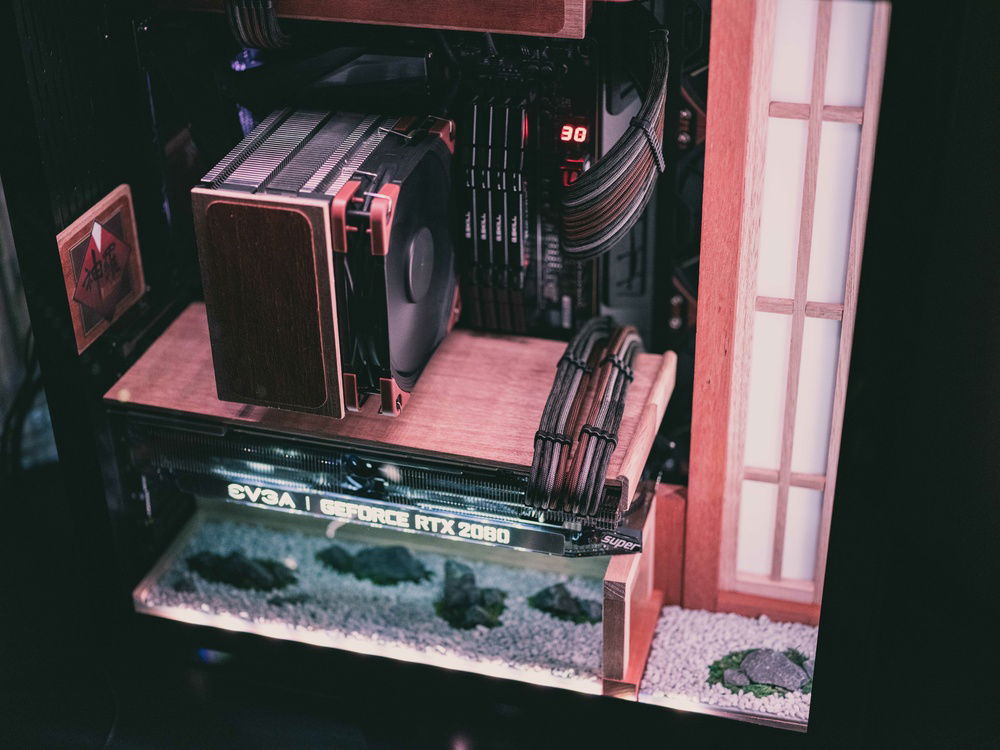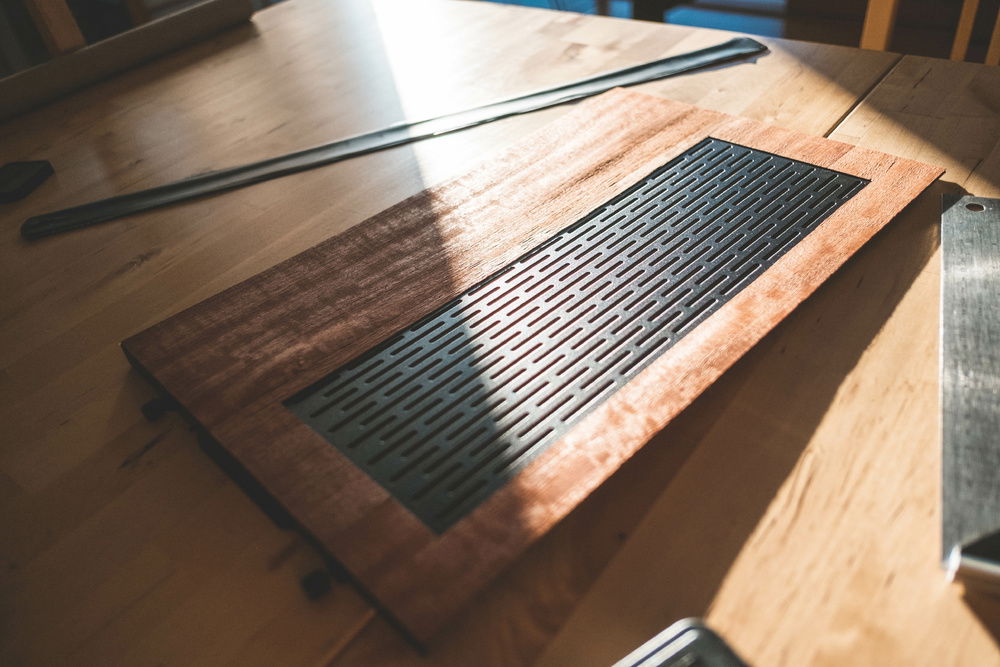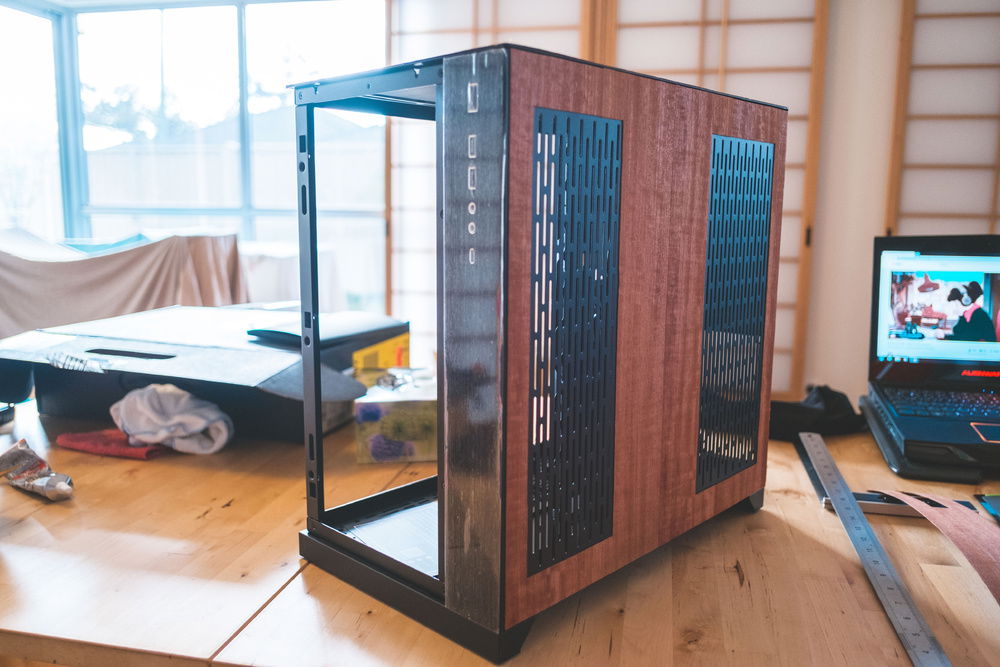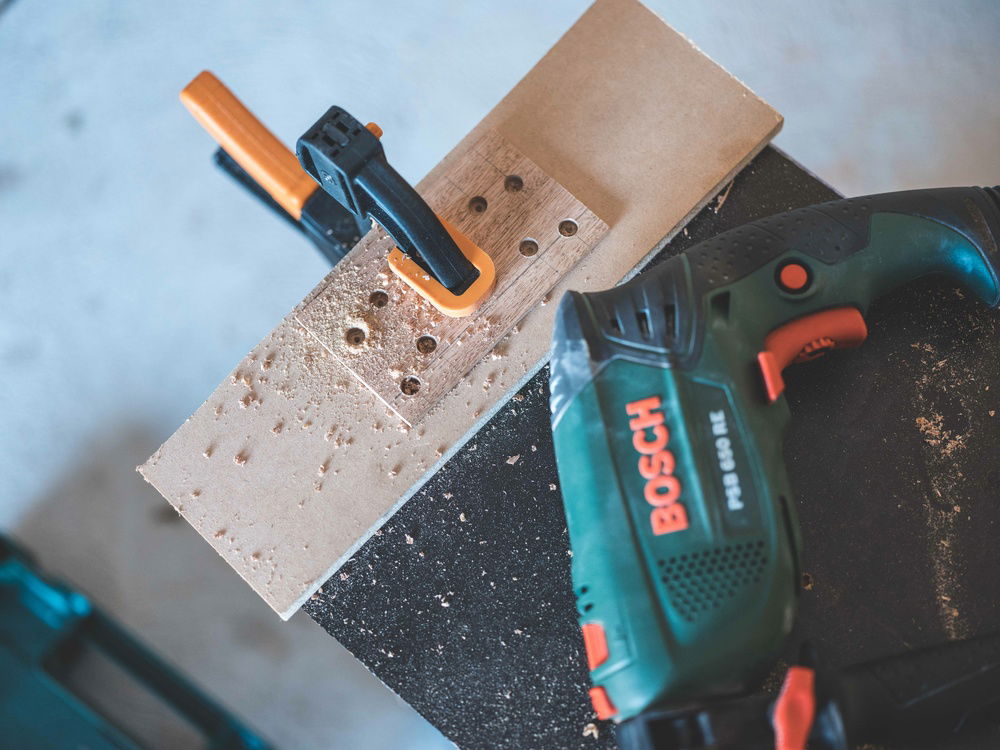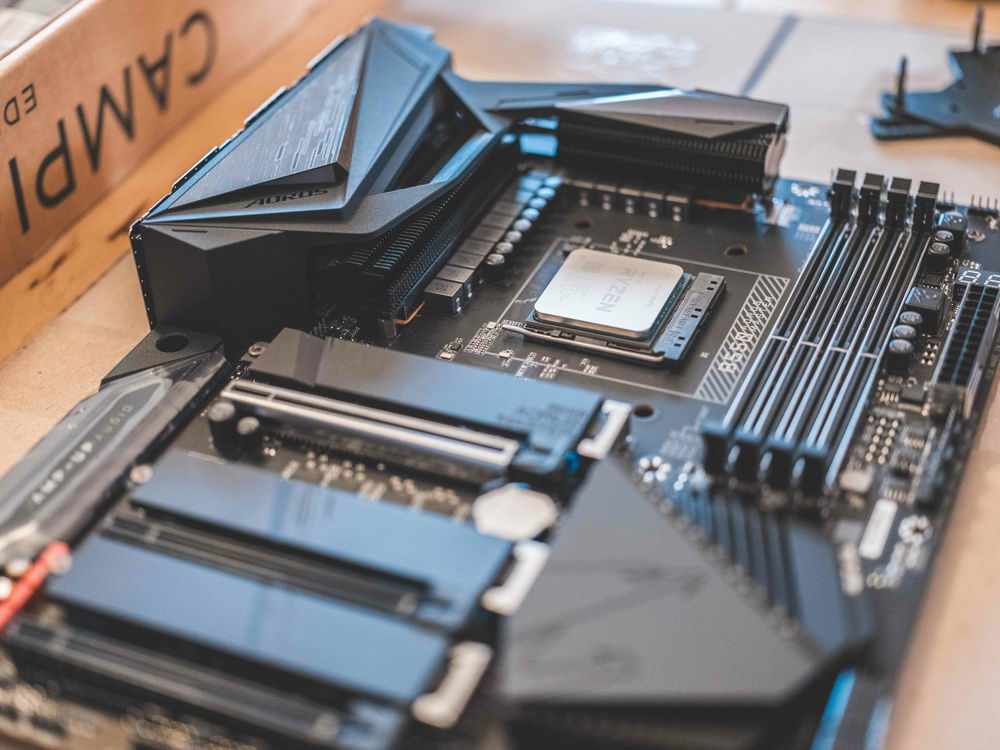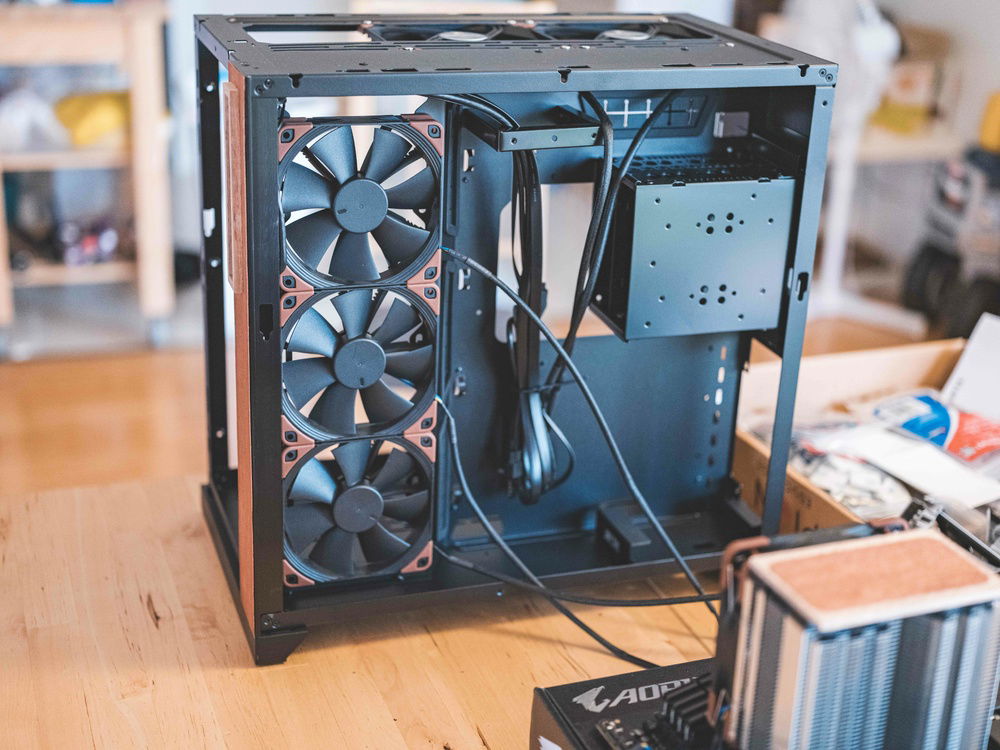ライゼン - (Ry) Zen
This has been a build that’s been 3 years in the making – ever since AMD announced the Ryzen line, I knew that I had to put together a true Zen-themed build one day. The build is based on core Japanese design principles (Kanso, Shizen, Yugen, Shibui and Seijaku) and borrows from a traditional Japanese colour palette of wood and stone. I’ve also tried to focus on the use of wood and natural materials where possible to lend an organic feel to what is otherwise a very inorganic object! The hardest challenge I set for this build was to incorporate multiple functions into each added item in the build, i.e. to serve both aesthetic and functional purposes.
This build would have been impossible without the Lian Li PC-O11 Dynamic – the moment I laid my eyes on it I knew that this was going to be the cornerstone of my Zen build. Providing clear views from all angles alongside sufficient room and flexibility for a build; the perfect combination!
The build primarily incorporates local Australian timbers – Jarrah and Tasmanian Oak. These can be found on the external veneer as well as the Shoji (screen), GPU backplate and panels for cable concealment (above motherboard). The main section of Shoji provides an aesthetic eye catcher inside / outside - looks good, distracts the viewer as well as conceals the case suction fans and cabling when viewing the case from the front. It also doubles as a funnel to force cool air towards the CPU cooler and GPU in what is otherwise a poorly rated case for airflow / cooling. The “Yukimi” (snow viewing) Shoji provides a different viewpoint of the Zen garden when viewing from the front of the case while serving its true purpose as a support stand for the heavy GPU. The main Shoji relies on acrylic panels for light diffusion / air-tight whereas the Yukimi Shoji uses traditional Shoji “Washi” paper.
The Zen garden forming the base layer of the case is based on Ryoan-ji, Kyoto where one of the most recognizable Zen gardens today can be found. Elements of the design principles of the Ryoan-ji garden layout feature throughout the build where not everything can be seen from a single viewpoint, lending surprise and mystery. Alongside the aesthetic function, the baseplate assists in maintaining positive pressure in the case and airflow direction by sealing off the bottom vents. The back wall of the garden also helps in concealing cabling feeding into the bottom of the motherboard (fans / USB / front panel and audio). A cheeky nod to the Shinra Electric Power Company helps conceal what would otherwise have been a rather out-of-place brushed steel plate (sorry DER8AUER!).
This has been my most challenging and rewarding build to date! 3 years of conceptualization and 3 months of actual building. A first for me was making my own custom sleeved cable extensions using 550 Paracord; the end results are so worth the burnt fingers!! Overall, a build that I’m extremely proud of and one that will sit on my desk for a long time to come.
This build would have been impossible without the Lian Li PC-O11 Dynamic – the moment I laid my eyes on it I knew that this was going to be the cornerstone of my Zen build. Providing clear views from all angles alongside sufficient room and flexibility for a build; the perfect combination!
The build primarily incorporates local Australian timbers – Jarrah and Tasmanian Oak. These can be found on the external veneer as well as the Shoji (screen), GPU backplate and panels for cable concealment (above motherboard). The main section of Shoji provides an aesthetic eye catcher inside / outside - looks good, distracts the viewer as well as conceals the case suction fans and cabling when viewing the case from the front. It also doubles as a funnel to force cool air towards the CPU cooler and GPU in what is otherwise a poorly rated case for airflow / cooling. The “Yukimi” (snow viewing) Shoji provides a different viewpoint of the Zen garden when viewing from the front of the case while serving its true purpose as a support stand for the heavy GPU. The main Shoji relies on acrylic panels for light diffusion / air-tight whereas the Yukimi Shoji uses traditional Shoji “Washi” paper.
The Zen garden forming the base layer of the case is based on Ryoan-ji, Kyoto where one of the most recognizable Zen gardens today can be found. Elements of the design principles of the Ryoan-ji garden layout feature throughout the build where not everything can be seen from a single viewpoint, lending surprise and mystery. Alongside the aesthetic function, the baseplate assists in maintaining positive pressure in the case and airflow direction by sealing off the bottom vents. The back wall of the garden also helps in concealing cabling feeding into the bottom of the motherboard (fans / USB / front panel and audio). A cheeky nod to the Shinra Electric Power Company helps conceal what would otherwise have been a rather out-of-place brushed steel plate (sorry DER8AUER!).
This has been my most challenging and rewarding build to date! 3 years of conceptualization and 3 months of actual building. A first for me was making my own custom sleeved cable extensions using 550 Paracord; the end results are so worth the burnt fingers!! Overall, a build that I’m extremely proud of and one that will sit on my desk for a long time to come.
Color(s): Black Brown
RGB Lighting? Yes
Theme: Art
Cooling: Air Cooling
Size: ATX
Type: General Build
Contests
This build participated in 2 contests.
| Rank | Contest | Date |
|---|---|---|
| #154 | EK 10K Challenge | ended |
| #2 | Build of the Month - October 2020 | ended |
Hardware
CPU
$ 218.00
Motherboard
$ 400.00
Memory
$ 219.99
Graphics
$ 999.99
Storage
$ 194.00
PSU
$ 296.40
Case
$ 160.56
Case Fan
$ 65.90
Case Fan
$ 119.80
Cooling
$ 139.88
Estimated total value of this build:
$ 2,849.42
Approved by:






















